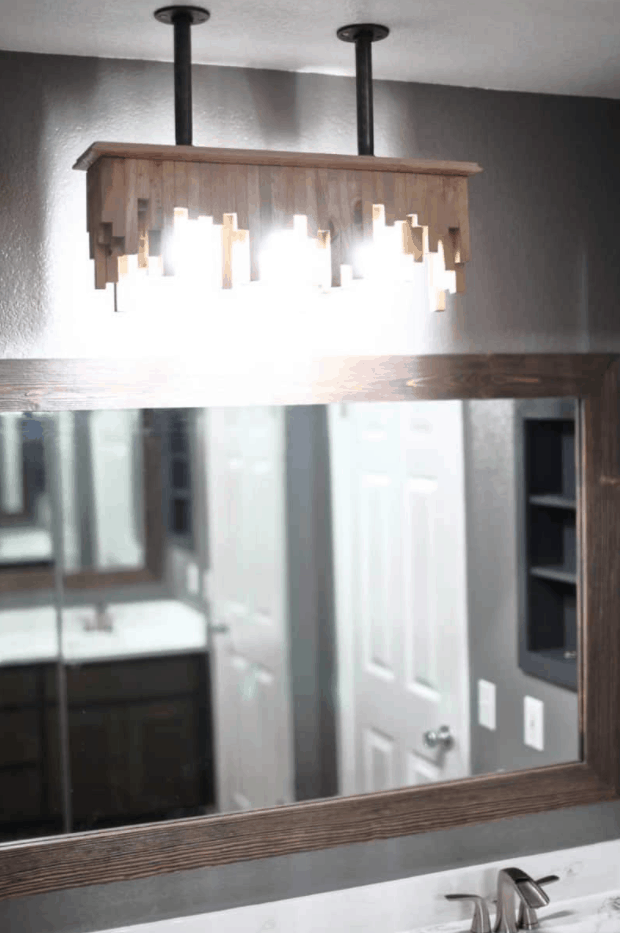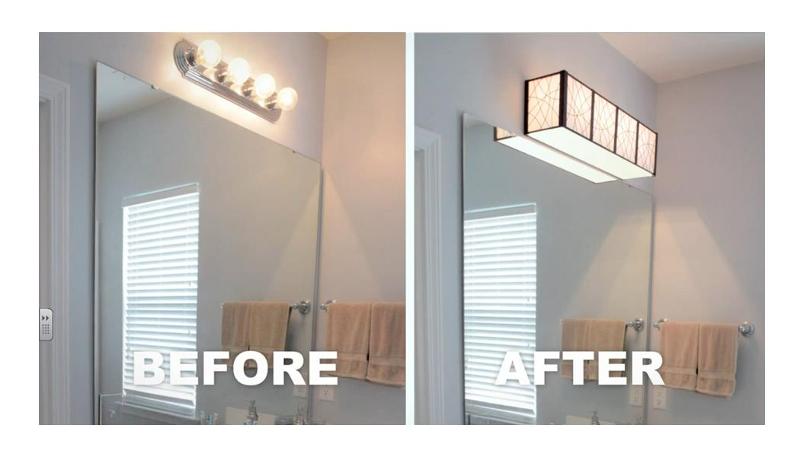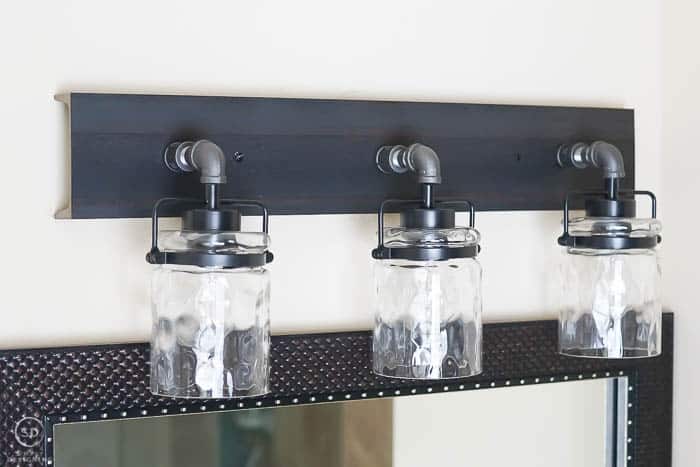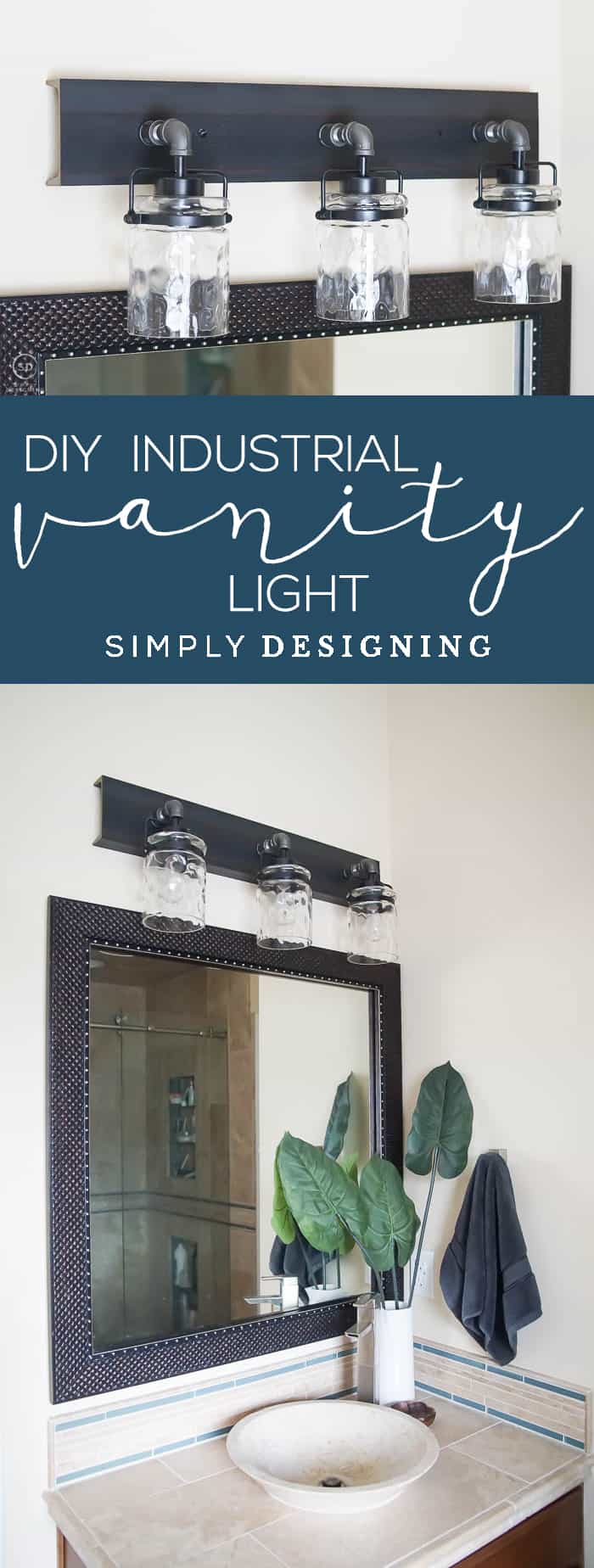Creating Ambiance with Dimmer Switches
Creating the perfect ambiance in your bathroom is crucial for a relaxing and functional space. One of the most effective ways to achieve this is by installing dimmer switches. Dimmer switches allow you to adjust the brightness of your lights, offering a range of lighting options to suit different moods and activities. Here’s a guide on how to incorporate dimmer switches into your bathroom lighting.
- Choosing the Right Dimmer Switch: Not all dimmer switches are created equal. It’s important to select a dimmer that is compatible with your existing light fixtures and bulbs. LED lights, in particular, often require specific dimmers designed to handle their low-wattage requirements. Research and invest in a quality dimmer switch that matches your lighting setup to avoid flickering or poor performance.
- Installation Basics: Installing a dimmer switch is a straightforward DIY project. First, ensure the power is turned off at the circuit breaker. Remove the existing switch and disconnect the wires. Follow the instructions provided with your dimmer switch to connect the wires correctly. Typically, you’ll match the wires from the switch to those in the wall using wire nuts. Secure the switch in the wall box, attach the faceplate, and turn the power back on to test your new dimmer.
- Setting the Right Mood: Dimmer switches are perfect for creating a spa-like atmosphere in your bathroom. When you’re winding down for the evening, lower the lights for a calming environment. Conversely, brighter lighting is ideal for tasks such as shaving or applying makeup. Experiment with different light levels to find the perfect balance for your needs.
- Energy Efficiency Benefits: Using dimmer switches can also lead to energy savings. By reducing the brightness of your lights, you consume less electricity, which can lower your utility bills. Additionally, dimming your lights can extend the life of your bulbs, reducing the frequency of replacements and contributing to a more sustainable household.
- Enhancing Bathroom Décor: Dimmer switches can enhance the overall aesthetic of your bathroom. Soft, adjustable lighting can highlight architectural features, artwork, or decorative elements in your space. Consider combining dimmable lights with wall sconces or under-cabinet lighting to create layers of light that add depth and interest to your bathroom.
- Safety Considerations: While installing a dimmer switch is a relatively simple task, it’s important to take safety precautions. Always turn off the power before working with electrical wiring. If you’re unsure about any step of the process, consult a professional electrician. Proper installation ensures that your dimmer switch functions correctly and safely, providing you with beautiful, adjustable lighting for years to come.

Installing Stylish Vanity Lights
Vanity lights are a key component of bathroom lighting, providing essential illumination for grooming tasks. Stylish vanity lights not only serve a functional purpose but also enhance the overall look of your bathroom. Here’s how to choose and install the perfect vanity lights for your space.
Selecting the Right Style: When choosing vanity lights, consider the style of your bathroom. Modern spaces might benefit from sleek, minimalist fixtures, while traditional bathrooms could be enhanced with classic, ornate designs. The style of your vanity lights should complement your bathroom’s décor and contribute to a cohesive look.
Placement and Positioning: Proper placement of vanity lights is crucial for effective illumination. Ideally, vanity lights should be positioned at eye level on either side of the mirror to eliminate shadows on your face. Alternatively, you can place a single fixture above the mirror. Ensure that the lights are evenly spaced and positioned to provide balanced lighting.
Types of Vanity Lights: There are several types of vanity lights to consider. Sconces, for instance, are mounted on the wall and come in various styles, from vintage to contemporary. Bar lights, which span the width of the mirror, are another popular option. Pendant lights, while less common, can add a unique touch to your bathroom if space allows.
Installation Guide: To install vanity lights, start by turning off the power at the circuit breaker. Remove the old light fixture and disconnect the wiring. Mount the new fixture’s base to the wall, following the manufacturer’s instructions. Connect the wires from the light fixture to the wires in the wall, using wire nuts to secure the connections. Attach the fixture to the base, install the bulbs, and turn the power back on to test the lights.
Bulb Selection and Light Quality: The type of bulb you choose for your vanity lights can significantly impact the quality of light. LED bulbs are a popular choice due to their energy efficiency and long lifespan. When selecting bulbs, consider the color temperature; bulbs in the 2700K to 3000K range emit a warm light that’s flattering for most skin tones. Ensure that the bulbs provide adequate brightness for tasks like shaving and makeup application.
Enhancing Your Bathroom’s Aesthetic: Stylish vanity lights can serve as a focal point in your bathroom, enhancing its aesthetic appeal. Consider fixtures with unique designs or finishes, such as brushed nickel or antique bronze, to add character to your space. The right vanity lights can transform your bathroom from a purely functional area into a stylish, inviting retreat.
Incorporating LED Strip Lights for a Modern Touch
LED strip lights are a versatile and modern lighting solution that can add a stylish and functional element to your bathroom. Whether used for accent lighting or to illuminate specific areas, LED strip lights can enhance the overall ambiance of your space. Here’s how to incorporate LED strip lights into your bathroom design.
Understanding LED Strip Lights
LED strip lights consist of a flexible circuit board with small LED bulbs embedded along its length. They come in various colors and brightness levels, allowing you to customize the lighting to suit your needs. LED strips can be cut to size and easily installed in different areas of your bathroom, making them a popular choice for DIY enthusiasts.
Accent Lighting Ideas
One of the most popular uses for LED strip lights in the bathroom is accent lighting. You can install strips under cabinets, along the base of the vanity, or behind mirrors to create a soft, ambient glow. This type of lighting adds a modern touch to your bathroom and can highlight architectural features or design elements.
Task Lighting Solutions
LED strip lights are also excellent for task lighting. Install them under shelves or inside cabinets to illuminate dark spaces and make it easier to find items. You can also place them around the vanity mirror to provide bright, even lighting for grooming tasks. The flexibility of LED strips allows you to position them precisely where you need extra light.
Installation Tips
Installing LED strip lights is a straightforward process. Start by measuring the area where you plan to install the strips and cut them to the desired length. Most LED strips come with an adhesive backing, making them easy to attach to clean, dry surfaces. Connect the strips to a power source, following the manufacturer’s instructions. Some LED strips can be plugged into an outlet, while others might require hardwiring.
Choosing the Right Color Temperature
The color temperature of your LED strip lights can affect the overall feel of your bathroom. Warm white (2700K-3000K) creates a cozy, inviting atmosphere, while cool white (4000K-5000K) offers a bright, energizing light that’s ideal for task-oriented areas. For a modern look, you might opt for RGB LED strips, which allow you to change colors and create dynamic lighting effects.
Benefits of LED Lighting
LED strip lights are energy-efficient, consuming less power than traditional incandescent or fluorescent bulbs. They have a long lifespan, reducing the need for frequent replacements. Additionally, LED lights produce minimal heat, making them a safe choice for bathroom applications. With their versatility and efficiency, LED strip lights are an excellent addition to any modern bathroom.
Adding Task Lighting for Enhanced Functionality
Task lighting is essential in the bathroom for performing detailed activities such as shaving, applying makeup, and grooming. Effective task lighting ensures that these tasks are carried out with ease and precision. Here’s how to add task lighting to your bathroom for enhanced functionality.
Identifying Key Areas
The first step in adding task lighting is to identify the key areas where focused light is needed. Common areas include the vanity, shower, and bathtub. Assess your bathroom layout and determine where additional lighting would improve visibility and functionality.
Vanity Lighting
The vanity area is one of the most critical spots for task lighting. Proper illumination around the mirror ensures you can see clearly for grooming activities. Consider installing wall-mounted sconces on either side of the mirror or an overhead light fixture. Ensure that the lights are positioned at eye level to minimize shadows and provide even lighting.
Shower and Bathtub Lighting
Adding task lighting to the shower and bathtub areas enhances safety and convenience. Waterproof recessed lights are an excellent choice for these wet areas. Position the lights to provide ample illumination without causing glare. For a luxurious touch, consider installing a dimmer switch to adjust the lighting intensity based on your needs.
Under-Cabinet and Shelf Lighting
Under-cabinet and shelf lighting can make a significant difference in the functionality of your bathroom. LED strip lights or puck lights installed under cabinets or shelves provide direct light to countertops and storage areas. This type of lighting is especially useful for finding items quickly and reducing shadows on work surfaces.
Choosing the Right Bulbs
The type of bulbs you choose for task lighting is crucial. LED bulbs are a popular option due to their brightness, energy efficiency, and long lifespan. When selecting bulbs, consider the color temperature. Cool white (4000K-5000K) bulbs provide bright, clear light that’s ideal for task-oriented areas, while warm white (2700K-3000K) bulbs create a softer, more relaxing ambiance.
Enhancing Safety and Comfort
In addition to improving functionality, task lighting enhances safety in the bathroom. Proper illumination reduces the risk of accidents, especially in areas like the shower and bathtub. Moreover, well-placed task lighting can create a more comfortable and pleasant environment, making your bathroom a more enjoyable space for daily routines.
Making a Statement with Decorative Fixtures
Decorative light fixtures can transform your bathroom from a utilitarian space into a stylish retreat. By choosing the right fixtures, you can make a bold design statement and enhance the overall aesthetic of your bathroom. Here’s how to incorporate decorative lighting into your bathroom design.
Choosing Statement Fixtures
When selecting decorative fixtures, consider the overall style of your bathroom. For a contemporary look, opt for sleek, minimalist designs. If your bathroom has a traditional or vintage feel, ornate fixtures with intricate details might be more appropriate. The key is to choose fixtures that complement your existing décor and reflect your style.
Chandeliers and Pendant Lights
Chandeliers and pendant lights are popular choices for making a statement in the bathroom. A chandelier can add a touch of luxury and elegance, while pendant lights offer a modern and chic look. Consider hanging a chandelier over the bathtub or placing pendant lights above the vanity to create a focal point and add visual interest.
Unique Wall Sconces
Wall sconces are a versatile and stylish option for bathroom lighting. They come in a variety of designs, from classic to contemporary, and can be used to highlight specific areas or architectural features. Install sconces on either side of the mirror for balanced lighting, or use them to frame a piece of artwork or decorative element.
Incorporating Natural Materials
Fixtures made from natural materials like wood, stone, or metal can add a unique and earthy touch to your bathroom. These materials bring warmth and texture to the space, creating a cozy and inviting atmosphere. Look for fixtures that incorporate these elements to add a natural, organic feel to your bathroom design.
Combining Function and Style
Decorative fixtures can be both stylish and functional. Choose fixtures that provide adequate lighting for daily tasks while also serving as a design element. For example, a stylish vanity light with a unique design can enhance the aesthetic appeal of your bathroom while providing the necessary illumination for grooming activities.
Adding the Finishing Touches
The right decorative fixtures can tie together the entire design of your bathroom. Consider coordinating your lighting fixtures with other elements in the space, such as hardware, mirrors, and accessories. This creates a cohesive look and enhances the overall aesthetic of your bathroom, making it a beautiful and functional retreat.
Maximizing Natural Light with Smart Placement
Maximizing natural light in your bathroom can make the space feel brighter, larger, and more inviting. Smart placement of windows, skylights, and reflective surfaces can enhance the amount of natural light in your bathroom. Here’s how to make the most of natural light in your bathroom design.
Strategically Placing Windows
Windows are the primary source of natural light in any room. When designing or renovating your bathroom, consider the placement and size of windows to maximize light. Large, strategically placed windows can flood the space with sunlight, creating a bright and airy atmosphere. If privacy is a concern, frosted or textured glass can allow light in while maintaining privacy.
Incorporating Skylights
Skylights are an excellent way to bring natural light into your bathroom, especially in spaces where traditional windows are not feasible. A well-placed skylight can illuminate the entire room, reducing the need for artificial lighting during the day. Consider installing a skylight above the shower or bathtub to create a spa-like experience.
Using Reflective Surfaces
Reflective surfaces can enhance natural light by bouncing it around the room. Mirrors are the most obvious choice, but glossy tiles, glass, and metallic finishes can also reflect light effectively. Position mirrors opposite windows to maximize the amount of light reflected into the space. This technique can make your bathroom feel larger and more open.
Choosing Light Colors
Light colors on walls, ceilings, and floors can help maximize natural light in your bathroom. White and light pastel shades reflect more light than darker colors, creating a brighter and more spacious feel. Consider using light-colored tiles, paint, and accessories to enhance the natural light in your bathroom.
Minimizing Obstructions
To maximize natural light, keep windows and skylights free from obstructions. Avoid placing large furniture or heavy curtains in front of windows. Instead, opt for lightweight, sheer curtains or blinds that can be easily opened to allow light in. Keep windows clean to ensure that the maximum amount of light can pass through.
Enhancing Privacy without Sacrificing Light
Maintaining privacy in the bathroom is essential, but it doesn’t have to come at the expense of natural light. Consider using frosted or textured glass for windows and skylights to allow light in while ensuring privacy. Another option is to install top-down, bottom-up shades that can be adjusted to let light in from the top while providing privacy below.
DIY Vanity Lights Simply Designing with Ashley
Remodelaholic Upcycle a Vanity Light Strip to a Hanging Pendant
DIY Industrial Bathroom Light Fixtures
DIY Industrial Bathroom Light Fixtures
Homemade Bathroom Light Fixture
Bathroom Design Ideas: DIY lighting fixture makeover – YouTube
DIY Vanity Lights Simply Designing with Ashley
How to make a Bathroom Vanity Light // Woodworking I Like To Make Stuff
Related Posts:
- Funky Bathroom Lights
- Adjustable Bathroom Light Fixtures
- French Country Bathroom Light Fixtures
- Bathroom Lighting Wall Sconce
- Beautiful Bathroom Light Fixtures
- Bathroom Lighting Zones Uk
- Rust Proof Bathroom Lighting
- Joanna Gaines Bathroom Lighting
- Bathroom Light Fixtures 48 Inches Long
- Vintage Bathroom Lighting Ideas












